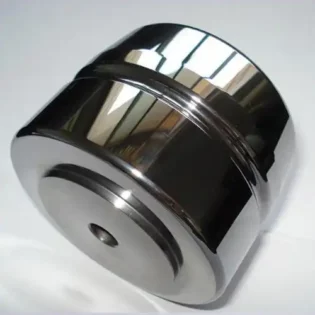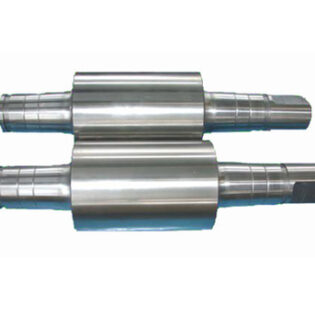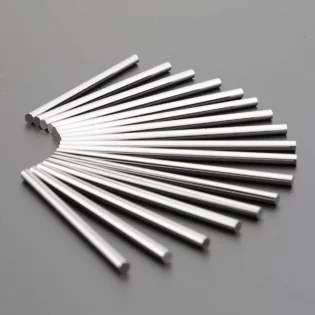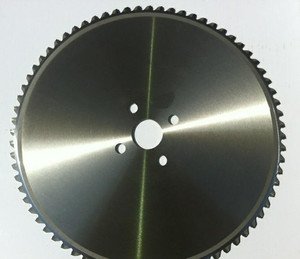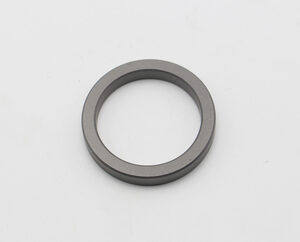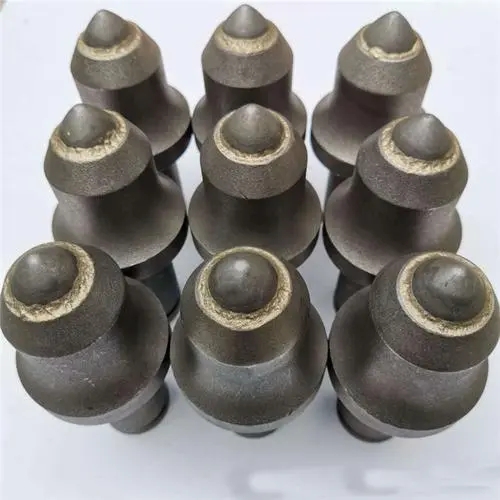
Selection of carbide?Brazing Materials
The brazing materials for tungsten carbide and steel brazing are divided into three categories: high-temperature brazing materials, room-temperature brazing materials, and low-temperature brazing materials according to their melting points and brazing temperatures.
High-temperature Brazing Materials
Brazing materials with a brazing temperature above 1000°C are called high-temperature brazing materials, such as purple copper and 106 brazing materials, etc. Medium-temperature brazing materials have a brazing temperature between 850 and 1000°C, such as H62 and H68 brass brazing materials, etc. Low-temperature brazing materials refer to brazing materials with a brazing temperature between 650 and 850°C, such as B-Ag-1 and L-Ag-49 silver-containing brazing materials.
Room-temperature Brazing Materials
Purple copper brazing materials have a high brazing temperature and low weld seam strength, and are mostly used for vacuum brazing. Pure copper brazing materials have a single-phase structure, are relatively easy to control the brazing temperature, have good wetting ability for various types of carbides, good plasticity, and are the cheapest. The shear stress of purple copper brazing weld seam is about 150MPa, and it can be used below 400°C. The brazing temperature of H68 brass is much lower than that of purple copper, but because of its low weld seam strength, it is not commonly used. The melting point and brazing temperature of H62 brass are relatively low, and the weld seam has certain room temperature strength, making it a commonly used carbide?brazing material. It is generally used for carbide?tools under medium and small loads. When high temperature strength of the weld seam or small welding area is required, 105 brazing material should be used.
Low-temperature Brazing Materials
L-Ag-49 low-temperature silver brazing material is widely used abroad because of its low melting point (690-710°C), good wetting ability for tungsten carbides, and advantages such as convenient brazing and low stress. When necessary, purple copper sheets can be used as compensating shims, which can almost completely eliminate brazing stress and prevent brazing cracks. It can be used for brazing some easily cracked carbides or some large brazing surface carbide tools. Since the workpiece brazed with L-Ag-49 silver brazing material will rapidly decrease in weld seam strength as the operating temperature increases, the working temperature of the workpiece brazed with L-Ag-49 brazing material should be limited to below 200°C. The brazing fluxes used in conjunction with L-Ag-49 brazing materials contain more fluorides and chlorides, requiring higher cleaning requirements after welding, otherwise, surface corrosion of the workpiece may occur due to inadequate cleaning.
Ultra-low-temperature Brazing Materials
B-Ag-1 brazing material is an ultra-low-temperature silver brazing material with a melting point around 600-610°C, which can further reduce the residual stress of tungsten carbide joint and can also be used for brazing some easily cracked workpieces with purple copper sheets as compensating shims. Due to the ultra-low melting point of B-Ag-1 silver brazing material and its good wetting ability to tungsten carbide, it is also suitable for brazing certain diamond tools such as large diamond saw blades. However, the price of B-Ag-1 silver brazing material is high, and its high-temperature strength is low, so it is only suitable for use at temperatures below 150°C. The cadmium content in this brazing material is 24%, which is easy to evaporate at high brazing temperatures, harmful to human health. In addition to controlling the brazing temperature during brazing, exhaust devices should also be installed at the brazing operation site. After brazing, attention should also be paid to cleaning the workpiece thoroughly to prevent corrosion of the workpiece.
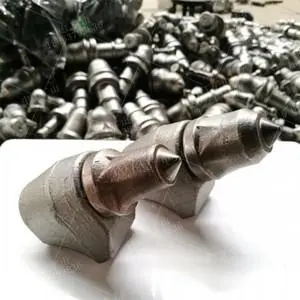
Selection of Brazing Flux
The function of brazing flux is to reduce the oxides on the surface of the shank and tungsten carbide, enabling the brazing material to wet the metal surface to be brazed effectively. Generally, the melting point of brazing flux is at least 100°C lower than that of the brazing material, with good fluidity and low viscosity. The melted brazing flux during brazing serves to protect the brazing material and brazing surface, while also acting to reduce oxides.
The main requirements for carbide?brazing flux are as follows:
1.The flux should exhibit good wetting ability on both the carbide?to be brazed and the steel substrate, ensuring that it possesses good fluidity and penetrability.
2.One of the characteristics of carbide?use is its high red hardness, so it’s crucial to ensure that the brazed weld seam has sufficient strength at both room temperature and high temperatures.
3.The melting point of the flux should be as low as possible to minimize brazing stress and prevent cracking. However, the melting point of the flux should be at least 300°C higher than the working temperature of the weld seam to ensure that the tool can function normally at high cutting speeds.
4.The flux should not contain elements with low evaporation points to avoid affecting joint quality during brazing heating or posing health risks.
Preparation Before Vacuum Brazing
1.Prior to vacuum brazing, check whether the tungsten carbide has cracks, bends, or uneven surfaces. The brazing surface must be flat. If the brazing surface is spherical or rectangular, it should conform to certain geometric shapes to ensure good contact between the alloy and the substrate, thus guaranteeing brazing quality.
2.Perform sandblasting treatment on the carbide. If sandblasting equipment is not available, the oxide layer and black grade letters on the brazing surface can be removed by holding the tungsten carbide by hand and grinding it on a rotating green silicon carbide wheel. If the oxide layer on the brazing surface of the carbide is not removed, the brazing material will not wet the carbide easily. It has been verified that if there is an oxide layer or black grade letters on the brazing surface, sandblasting treatment should be carried out. Otherwise, the brazing material will not wet the carbide easily, and black letters will still appear in the brazing seam, reducing the brazing area and causing brazing defects.
3.When cleaning the brazing surface of the carbide, it is best not to use chemical mechanical grinding or electrochemical grinding methods. Instead, wire cutting by electric spark erosion should be used. The processed tungsten carbide can then be sandblasted again or ground with a green silicon carbide wheel to remove the surface layer. The sandblasted carbide can be cleaned with gasoline or alcohol to remove oil stains.
4.Before vacuum brazing, carefully check whether the groove shape on the steel substrate is reasonable, especially for carbide grades prone to cracking and tungsten carbide workpieces with large brazing surfaces. Stricter requirements should be imposed. The grooves should also be sandblasted and cleaned to remove oil stains. When the cleaning volume is large, an alkaline solution can be boiled for 10-15 minutes. For multi-blade tools and complex gauges brazed with high frequency or immersed copper, it is best to boil them in a saturated borax water solution for 20-30 minutes, take them out to dry, and then carry out welding.
5.Before using the brazing material, wipe it clean with alcohol or gasoline and cut it into shape according to the brazing surface. When brazing general carbide cutting tools or molds, a brazing material thickness of about 0.4-0.5mm is suitable, and its size should be similar to the brazing surface. When using continuous nitrogen protection for brazing furnace heating, the brazing material can be appropriately increased. When brazing tungsten carbide multi-blade cutting tools, gauges, etc., the brazing area should be minimized. Generally, the brazing material can be cut to about 1/2 of the brazing surface. When the brazing technology is proficient, the brazing material can be reduced to 1/3 of the brazing surface or even smaller. Reducing the amount of brazing material can make the appearance of the welded workpiece more beautiful and facilitate grinding.
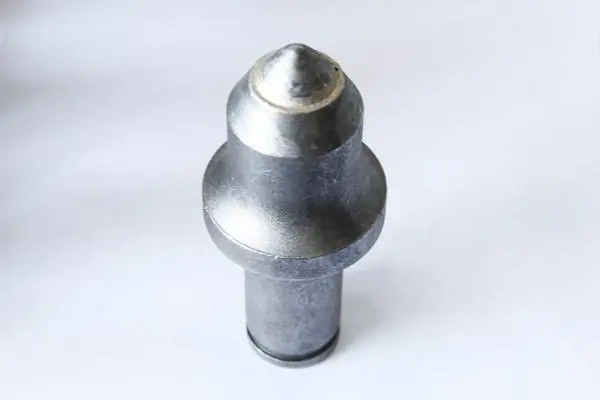
Vacuum Brazing Process
Uniform Heating of the Shank and carbide Inserts The correct vacuum brazing process for tungsten carbide tools plays a crucial role in welding quality. The heating rate significantly affects the quality of the weld. Rapid heating can cause cracks and uneven temperatures in the carbide inserts. However, heating too slowly can lead to surface oxidation, reducing joint strength.
During vacuum brazing of carbide tools, uniform heating of the shank and carbide inserts is one of the basic conditions to ensure welding quality. If the temperature of the tungsten carbide inserts is higher than that of the shank, the melted brazing material wets the carbide inserts but not the shank, leading to decreased joint strength. In this case, when shearing the alloy insert along the weld layer, the brazing material remains intact, detaching along with the alloy insert. Milling marks from the shank support surface can also be seen on the weld layer. Conversely, if the heating rate is too fast and the temperature of the shank is higher than that of the alloy inserts, the opposite phenomenon occurs.
Arrangement of Flux, Brazing Material, and tungsten carbide Inserts
The sequence and positions of flux, brazing material, and carbide inserts directly affect brazing quality. The correct arrangement method is as follows: place the brazing material on the groove, sprinkle flux, then place the carbide inserts, and sprinkle another layer of flux along the side weld seam on the top surface of the carbide inserts. This facilitates temperature control during brazing, reducing excess brazing material adhering outside the weld seam. It’s crucial to control the vacuum brazing temperature of the workpiece correctly. Excessive vacuum brazing temperature can cause weld seam oxidation and zinc evaporation from zinc-containing brazing materials.
Brazing Parameters
During vacuum brazing, maintain a vacuum degree of about 5 X 10-2 Pa. The heating rate is an important parameter during vacuum brazing, as excessive heating rate leads to a sharp drop in vacuum degree, which can cause oxidation of carbide and brazing materials. In production, the vacuum brazing process is as follows: increase the temperature from room temperature to 800°C at a rate of 10°C/min, hold for 30 minutes, then increase the temperature to the set temperature at a rate of 9°C/min, hold for 10 minutes, and then cool down with the furnace. The 800°C holding temperature ensures uniform heating of the base material. Increasing the temperature to the set temperature at a rate of 9°C/min ensures that the vacuum degree does not decrease significantly, and the short-term holding at the set temperature allows the brazing material to melt fully and prevents excessive evaporation of particulate magnesium in high vacuum.
Cooling Speed After Vacuum Brazing
The cooling speed after vacuum brazing is one of the main factors affecting brazing cracks. During cooling, instantaneous tensile stress occurs on the surface of carbide?inserts, and the tensile stress of carbide?is much lower than the compressive stress. Especially for carbide?grades such as YT60, YT30, and YG3X, which have large brazing areas and small matrices but large carbide?inserts, attention should be paid to the cooling speed after brazing. Usually, the post-welded workpiece is immediately immersed in lime or charcoal powder to cool slowly. This method is simple but does not control the tempering temperature. If conditions permit, the workpiece can be immediately placed in a furnace at 220-250°C for tempering for 6-8 hours after brazing. Low-temperature tempering can eliminate some brazing stress, reduce cracks, and prolong the service life of carbide?tools.
Cleaning After Vacuum Brazing
After vacuum brazing, the product can be polished with sandpaper and then polished with polishing paste. Post-brazing cleaning of well-brazed carbide?parts is necessary to remove residual flux around the weld seam. Otherwise, excess flux will clog the grinding wheel during tool sharpening, making grinding difficult. Residual flux after brazing can also corrode the weld seam and base material. Common cleaning methods include boiling the cooled workpiece in boiling water for about 1-2 hours, followed by sandblasting to remove residual flux and oxides adhering to the weld seam surroundings. Alternatively, the workpiece can be immersed in an acid bath for pickling (nitric acid concentration of 3%-5%) and washed with NaOH solution. The pickling time is about 1-4 minutes, followed by thorough rinsing in cold and hot water tanks.
Quality Inspection of Vacuum Brazed Products
The main inspection focuses on the quality of the brazed joint between the carbide?and the steel shank, as well as the presence of cracks in the carbide. A normal weld seam should be uniform without black spots, and the unfilled portion of the weld seam should not exceed 10% of the total length of the weld seam. The width of the weld seam should be less than 0.15mm. If the brazed blade is skewed and does not meet the drawing requirements, it should be re-brazed. The tendency for cracks in carbide?blades can be checked using the following methods:
1.After cleaning the tool with sandblasting, wash it with kerosene and then observe it with the naked eye or a magnifying glass. When there are cracks on the blade, obvious black lines will appear on the surface.
2.Prepare a solution by mixing 65% kerosene, 30% transformer oil, and 5% pine oil, and add a small amount of Sudan red. Immerse the pre-checked tools in this solution for about 10-15 minutes, then remove and rinse them with clean water. Apply a layer of kaolin clay, dry it, and then inspect the surface. If there are cracks on the tool, the color of the solution will be displayed on the white clay, which can be clearly seen with the naked eye.
Summary
The characteristics of using carbide?tools in mining are large impact loads and vibrations, requiring the carbide?inserts to be firmly brazed with minimal brazing stress. The surface roughness of groove machining has a significant impact on the strength of the weld seam. The lower the roughness, the higher the strength of the weld seam (although lower roughness makes machining more difficult). Generally, a roughness of around Ra6.3 is sufficient. To obtain weld seams that are thin and uniform in appearance, the groove machining accuracy of carbide?gauges should be higher.
In conclusion, the vacuum brazing and quenching of cutter teeth are becoming increasingly common due to their high production efficiency, stable quality of brazed joints, and complete heating, brazing, and quenching in a vacuum environment, which avoids oxidation and decarburization of the cutter teeth. Therefore, the vacuum brazing and quenching process for cutter teeth will be more widely adopted.
